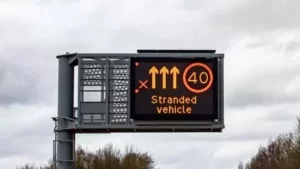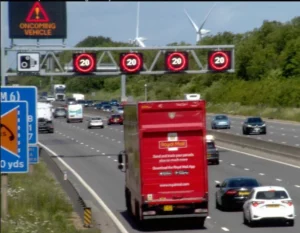No errors have been found in the underlying calculations and the comparisons about the relative safety of All Lane Running motorways and these were made in an appropriate way, said an independent report by the Office of Rail and Road (ORR).
The report, commissioned by Secretary of State for Transport, Grant Shapps, follows a Progress Report from National Highways to set out progress on those 18 actions and to develop proposals about how several of them can be accelerated, going above and beyond what was originally committed to. The Progress Report was also an opportunity to review updated data since the 2020 Stocktake. Crucially, the data contained in the National Highways Progress Report published in April 2021 continues to show that fatal casualties are less likely on all lane running motorways (ALRs) than on conventional ones.
Now, the ORR’s report, Quality Assurance of All Lane Running motorway data, found that all the products and processes reviewed are in line with established practice. It said: “Overall, the data and evidence that were available for analysis have been used. We found no errors in underlying calculations and the comparisons about the relative safety of ALR motorways were made in an appropriate way. There were some issues in the tools used to underpin risk modelling that Highways England should address. We make some further recommendations to deepen the use of
comparisons and enhance the understanding of risk exposure.”
Speaking yesterday to Parliament, Mr Shapps said the report was a ‘thorough undertaking;’ with the ORR drawing on its expertise as the monitor of England’s strategic road network.
As part of the work, ORR analysed detailed information, interviewed relevant staff at both National Highways and the Department for Transport, and reviewed the evidence submitted to the Transport Select Committee inquiry, which commenced in February 2021.
To provide additional expertise and challenge, ORR took independent analytical advice from a specialist consultancy and involved the non-executive chair of its National Highways Committee. This was done to ensure the conclusions and recommendations arrived are as robust and comprehensive as possible. The report supports National Highway’s findings that smart motorways are the safest roads in the country in terms of fatalities.
The report did recommend that a smaller number of ‘headline’ metrics should be used to communicate safety. Also on communication, it said: “We recommend that, in addition to the actions taken in response to the Stocktake, DfT and Highways England review how future changes to the infrastructure and road rules are communicated to both the
domestic and international road user.”
It also said the counterfactual could be improved to reflect the specifics of each scheme rather than the use of national trends. Highways England has already recognised that this can be enhanced by disaggregating its analysis to account for regionalised trends. Some of the international literature we have seen describes simple regression models that control for factors such as traffic level and composition. This could inform Highways England’s approach. The relative lack of data means that carrying out significance testing (whether we can be confident that changes over time in the data are because of the implementation of ALR) is not straightforward. Highways England has used a
complex method for calculating the significance and this could be simplified to make the assessment more transparent, said the report.
Mr Shapps said: “I welcome the ORR’s review and their conclusion that they found no errors in the underlying calculations, and all the products and processes reviewed are in line with established practice.
” I commissioned a Progress Report from National Highways to set out progress on those 18 actions and to develop proposals about how several of them can be accelerated, going above and beyond what was originally committed to. The Progress Report was also an opportunity to review updated data since the 2020 Stocktake. Crucially, the data contained in the National Highways Progress Report published in April 2021 continues to show that fatal casualties are less likely on all lane running motorways (ALRs) than on conventional ones.
“The evidence stocktake that was published in March 2020 showed that ALR motorways are in most ways as safe as, or safer than, conventional ones. I was determined to make sure they were the safest roads in Britain and to this end, I announced a package of 18 measures, costing £500 million, which includes the faster rollout of a radar-based stopped vehicle detection (SVD) across the ALR network, including an additional £5 million on national and targeted communications campaigns to ensure drivers receive the right advice to help them keep safe.”





















